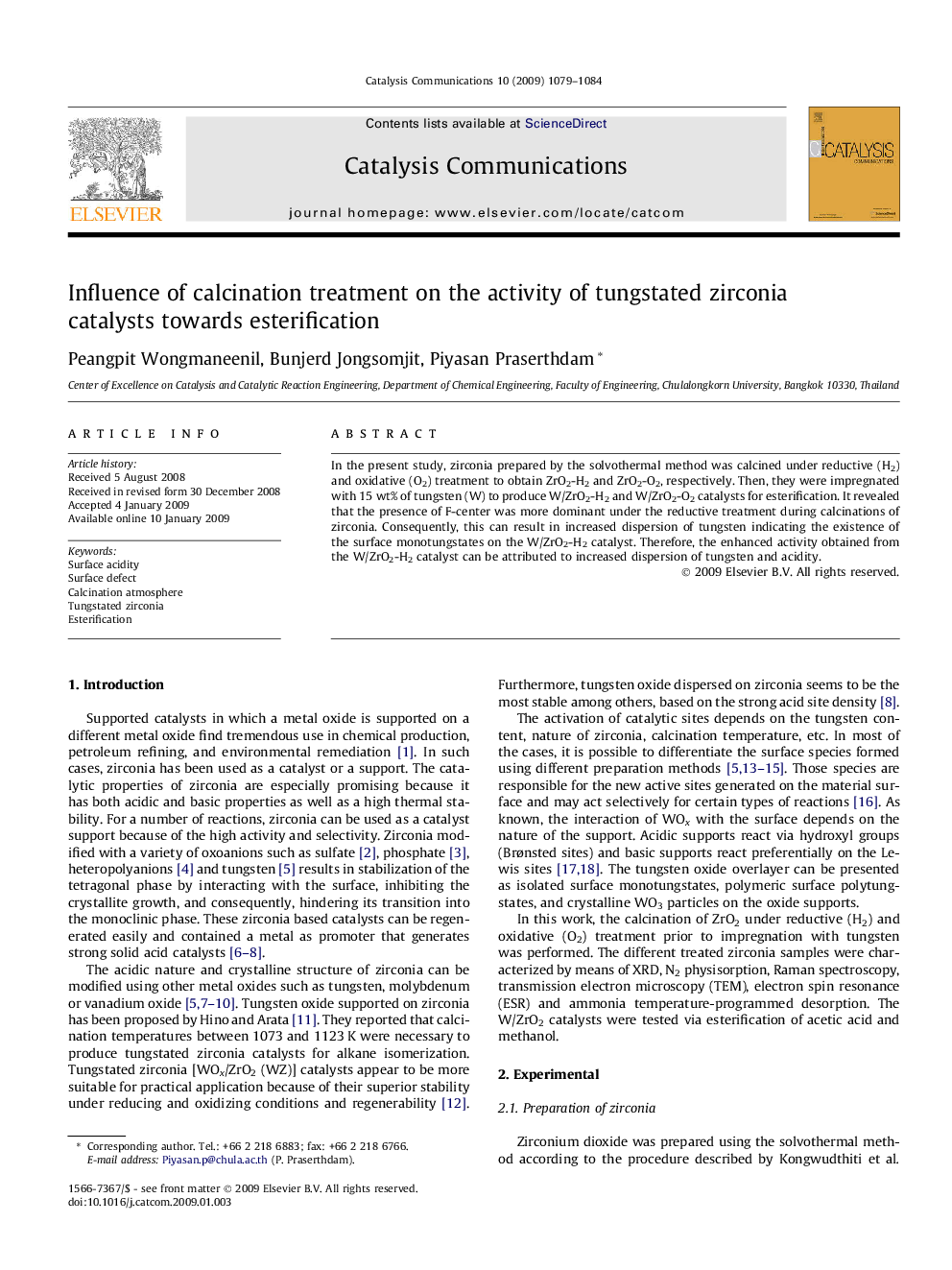| Article ID | Journal | Published Year | Pages | File Type |
|---|---|---|---|---|
| 51537 | Catalysis Communications | 2009 | 6 Pages |
Abstract
In the present study, zirconia prepared by the solvothermal method was calcined under reductive (H2) and oxidative (O2) treatment to obtain ZrO2-H2 and ZrO2-O2, respectively. Then, they were impregnated with 15 wt% of tungsten (W) to produce W/ZrO2-H2 and W/ZrO2-O2 catalysts for esterification. It revealed that the presence of F-center was more dominant under the reductive treatment during calcinations of zirconia. Consequently, this can result in increased dispersion of tungsten indicating the existence of the surface monotungstates on the W/ZrO2-H2 catalyst. Therefore, the enhanced activity obtained from the W/ZrO2-H2 catalyst can be attributed to increased dispersion of tungsten and acidity.
Related Topics
Physical Sciences and Engineering
Chemical Engineering
Catalysis
Authors
Peangpit Wongmaneenil, Bunjerd Jongsomjit, Piyasan Praserthdam,
